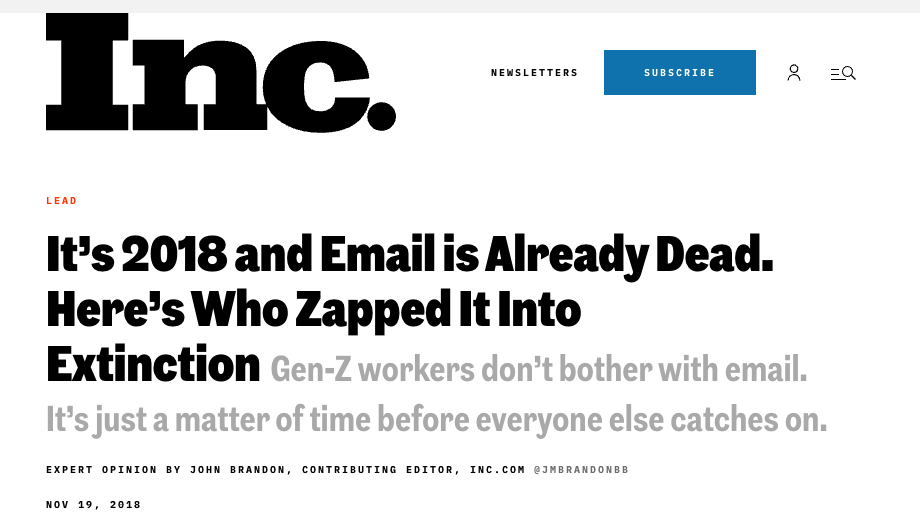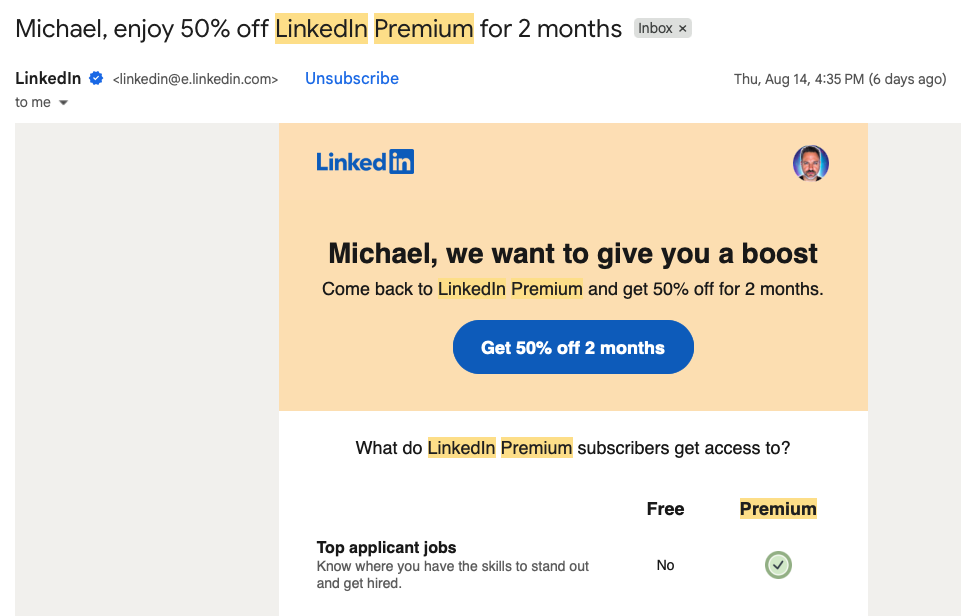What is the Return on Investment of Email Marketing?
According to Omnisend, it’s $36 to $40.
That means for every $1 you spend on email marketing, you make $36 to $40 back. Learn why in this video breakdown:
The reason email marketing works so well is because of a built-in consistency bias. Dr. Robert Cialdini talked about this in his legendary book Influence. Our brains are wired for consistency, meaning we want to stay consistent with our past behaviors. That’s why it’s so hard to get people to change their minds about things.
Email marketing plays directly on that bias. Once you opt into an email list, you’ve made a commitment—and you want to stay consistent with it. I sometimes think of it like going on a third or fourth date.
How do you end up on an email list?
- You consume content or ads.
- You click to go to an opt-in page
- You enter your email address
- Then you confirm your email
So even BEFORE you get a single email, you’ve taken 4 separate actions that add to up a gigantic YES.
This is what makes email so powerful.
Think about dating: after the first date, maybe there’s a 35% chance you’ll go on a second. If you do, the odds of a third go up. If you make it to a third, the odds of a fourth increase.
Email works the same way—each interaction strengthens the relationship and snowballs over time.
Now, you might ask: “Can’t the same be said about social media? Isn’t Instagram, TikTok, or YouTube the same thing?”
Not really. Following someone on social media is low-commitment. You tap a button and keep scrolling.
It’s not a solitary, one-to-one relationship. With email, you’ve jumped through multiple hoops—opting in, confirming, opening. And that’s AFTER consuming content or ads.
Those extra steps build a stronger emotional connection.
Plus, remember how modern social media algorithms work. They serve content to you based on what they think you want, not what you actually choose.
With email, it’s the other way around. Emails are delivered in chronological order, and you choose which ones you open.
Another reason email marketing is so lucrative is automation.
You can do things you’d never be able to do on social media, like
- If someone clicks a link but doesn’t buy, you can send a follow-up sales email two hours later.
- If they buy product A, you can offer product B the next day.
- You can send a testimonials request two months after the purchase of an online course.
Automation is like having a 24/7 sales team that never eats, never takes breaks, and never sleeps.
If you’re not using email automations, you’re leaving money on the table.
Segmentation is another advantage. You can send highly targeted messages to only the people who fit a specific profile. For example, if you have a $10,000 program that’s only right for past customers, you can send it only to them.
Email also allows testing. You can split-test subject lines, calls to action, and message formats. On social media, you can’t do anything even close. Sure, YouTube lets you test thumbnails, but can you split-test two entire videos? Or two video descriptions? NOPE.
Email is great for data analysis too. You can see which messages people open, which links they click, and which emails make people buy. Then you double down on what works and eliminate what doesn’t. With social media, there’s much less clarity about what truly drives sales.
Email also feels personal. My most profitable emails are plain-text messages with no logo—just words, like a friend or colleague might send. People check email multiple times a day, despite all the talk that “email is dead.”
Look at this Inc. headline from 2018.
“It’s 2018 and Email Is Already Dead.”

The truth is, more emails get sent every year.

Every single statistic about the email marketing industry points to nonstop growth.
And guess who some of the biggest users of email marketing are? Social media companies themselves. LinkedIn constantly emails me to upgrade to Premium.

Facebook and Google do the same thing. These companies have more data than anyone in the universe (including what’s working in ad campaigns at any given time) and they still use email aggressively to make money.
Email is also very cost-effective. For $20–$40 a month, you get an email platform with unlimited sending. If you write a sales email that flops, people forget about it in five seconds. You lost maybe 20 minutes of time—no big deal. Compare that to a failed video production or ad campaign that costs real money.
And if you write a message that works?
You can use it again and again, or repurpose it into a video, blog post, or ad. Nothing scales like email. There’s no difference between sending 100 emails and 1 million.
Email also allows you to spark personal connections. You can send a one-sentence email like:
“I’m just wondering – are you working on anything you need help with?”
Or:
“Hey, just wanted to know what you think of the new course. Reply to this email and share your thoughts.”
These little touches build goodwill and improve your sender reputation, which leads to better email deliverability and more money over time.
The best part? Email feels human. You can send one message to 50,000 people, but if it’s written in a natural, conversational style, every person will feel like it’s meant just for them. Even though they know automation is involved, it still works.
If you don’t believe me, try it. Write an email like you’re talking to a friend at a bar. You’ll be shocked at how many positive replies you get.
So, I hope you enjoyed this article, and I hope you watched the video above.
If you did, check out my lesson on the eight biggest lies you’ve been told about email marketing.
